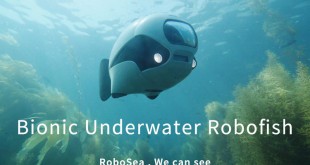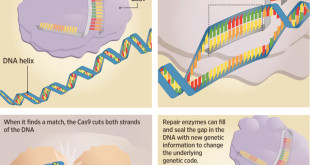The exploration of the underwater world has always fascinated humankind, prompting scientists and engineers to develop advanced technologies for underwater vehicles. Unmanned underwater vehicles (UUVs), also known as underwater drones, are submersible vehicles that can navigate their way through various water systems with or without human intervention. Typically, UUVs fall …
Read More »Revolutionizing Disease Diagnosis: The Future of DNA Detection
In the relentless pursuit of better healthcare, scientists and researchers are constantly pushing the boundaries of medical technology, seeking innovative ways to diagnose and treat diseases more effectively. Among the many promising advancements, DNA detection stands out as a transformative force, poised to revolutionize disease diagnosis and usher in a …
Read More »Pioneering the Future: Technological Breakthroughs Revolutionizing Age-Related Disease Management
In the relentless pursuit of healthier, longer lives, groundbreaking technologies are emerging as beacons of hope, offering novel approaches to tackle age-related diseases. As the global population ages, the urgency to address conditions such as Alzheimer’s, cardiovascular diseases, and arthritis has sparked a wave of innovation that transcends traditional medical …
Read More »Biotechnology Contract Manufacturing: Paving the Future of Advanced Therapeutics
Introduction: In the dynamic landscape of biotechnology, the role of contract manufacturing organizations (CMOs) has become increasingly crucial. In the ever-evolving landscape of biotechnology, contract manufacturing is poised to undergo a transformative evolution. Fueled by rapid advances in genetic engineering, personalized medicine, and pharmaceutical innovation, this industry is set to become …
Read More »The Ascendance of Smart Robotic Prosthetics: Market Overview and Future Trends
Introduction: The prevalence of limb loss is a global concern, affecting 2.1 million individuals in the U.S. alone, with chronic diseases such as diabetes, vascular diseases, and cancer being primary contributors to amputations. As the global incidence of chronic diseases continues to surge, reaching 71% of global deaths annually, the …
Read More »Harnessing the Power of Microbes: Bacteria Generate Electricity from Wastewater
In the quest for sustainable energy sources, scientists have turned to some of the tiniest and often underestimated heroes of the natural world: bacteria. These microscopic powerhouses are demonstrating their ability to generate electricity from an unlikely source – wastewater. In this blog, we’ll explore the remarkable phenomenon of bacteria …
Read More »CRISPR and Gene Editing: Revolutionizing Medicine and Shaping the Future of Human DNA Engineering
Introduction: In the span of just a few years, CRISPR, an acronym for Clustered Regularly Interspaced Short Palindromic Repeat, has transformed from a novel gene-editing tool to a powerhouse technology reshaping our approach to medicine and genetics. This revolutionary system, likened to genetic scissors, has garnered attention for its ability …
Read More »Revolutionizing Synthetic Biology: AI’s Transformative Impact on Accuracy, Speed, and Cost
In the realm of scientific discovery and technological advancement, the intersection of artificial intelligence (AI) and synthetic biology is forging a path toward unprecedented possibilities. As these two fields converge, AI is proving to be a catalyst, accelerating progress in synthetic biology by enhancing accuracy, speed, and cost-effectiveness. Understanding Synthetic …
Read More »Gene Therapy: A New Hope for Genetic Disorders
Genetic disorders, conditions caused by abnormalities in an individual’s DNA, have long posed significant challenges for patients and the medical community. While some of these disorders are treatable with traditional medical interventions, many are incurable and lead to a lifetime of suffering. However, emerging scientific advancements in the field of …
Read More »Unraveling the Potential of Biochips: Technology and Applications
Introduction In the ever-advancing landscape of healthcare and diagnostics, biochips have emerged as a game-changing technology with the potential to revolutionize the way we detect infections, allergies, and pathogens. These microminiaturized test sites are capable of performing a myriad of biochemical reactions, all from just a tiny sample of blood …
Read More » International Defense Security & Technology Your trusted Source for News, Research and Analysis
International Defense Security & Technology Your trusted Source for News, Research and Analysis


